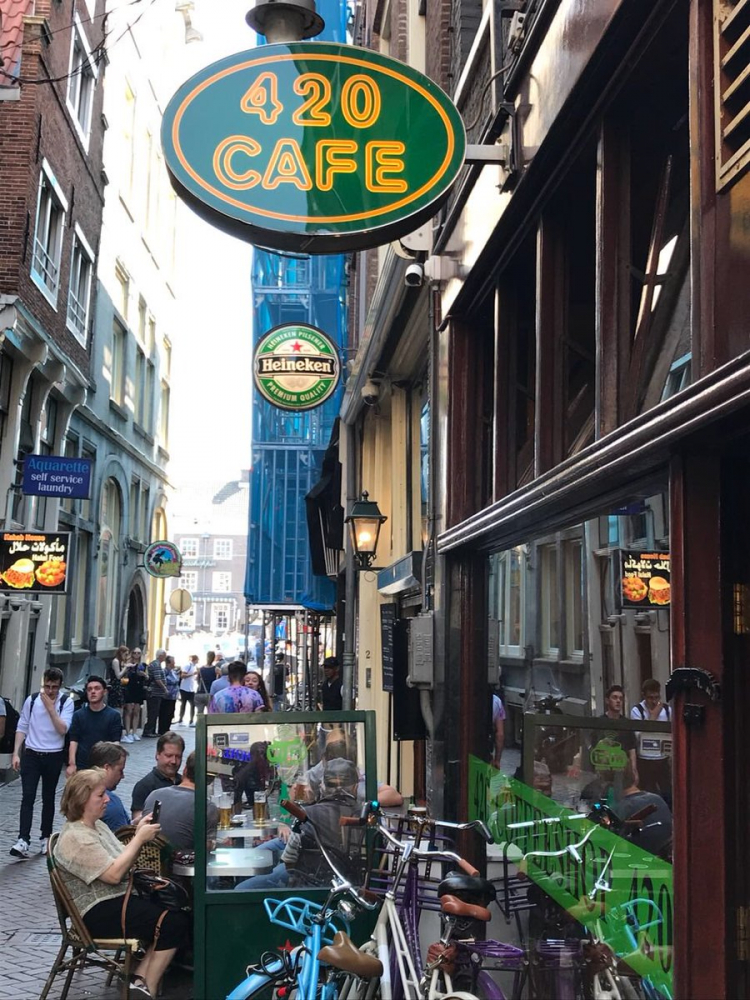Amsterdam Has a Serious Overcrowding Problem

4/20, the proclaimed "holiday" for those who smoke marijuana just took place this week, and many tourists came to Amsterdam to take part in a weekend of recreational drugs and partying. This left the city feeling cramped, as tourists, trams, and bikes battled to occupy the last remaining spaces of the small city. However, some say that holidays like 4/20 and King's day are not the only time Amsterdam suffers from overcrowding and a lack of space, but that this problem occurs daily.
In the last few years, Amsterdam has become one of the most popular destinations for travelers to visit. This is due in part to its relaxed laws on smoking marijuana in coffee shops, and especially prostitution, which only became legalized since 2000. Due to such a reputation, the city is especially attracting to a younger group of travelers who want to partake in activities that would otherwise be illegal in their home countries. And now more than ever, this city has become packed with tourists. According to the Guardian, in 2018, 18.5 million tourists flocked to the city of Amsterdam, and officials say this number will steadily rise each year. Further reports indicate that by 2025 there will be an estimated 29 million tourists a year who will visit Amsterdam.
A crowd walks through small streets. Image Credits: Zakiyyah JobThe number of people visiting pose a problem, especially because with them, there are people who only want to come for the prostitution and the marijuana, and neglect other gems that the city has to offer. In addition, many of the tourists are public nuisances to the city. It is not uncommon to see public urination on the streets, groups of intoxicated tourists, or garbage littered on the sidewalk. This is especially prevalent in popular areas such as Dam Square, Central Station and the Red Light district.
Amsterdam resident Pierre Baranyanka states that in the summertime particularly, the city becomes "literally unlivable", as the number of tourists visiting the city skyrockets. "Amsterdam is a small city. There are just too many bikes, too many tourists, it all just becomes too much after a while."
Signs prohibit public urination. Image Credits: Zakiyyah JobThe symbolic I AMSTERDAM sign was even removed from the city, in what some say is a measure to show the Dutch frustration with overcrowding in the city. The city is implementing measures to correct tourists' behavior and to solve issues such as overcrowding in the red light district, where the problem has gotten out of hand.
The I Live Here campaign is specifically meant to correct the behaviors of rowdy tourists in the red light district. On the website, the goal of the campaign is simple. "The aim of this campaign is to make visitors more aware that normal people live in the Red Light District and to take this into account."
According to officials, 1,000 guided tours pass by on the popular streets. Now, in order for tour groups to go into the red light district, there must be a maximum number of 5 people per group. Officials plan to even ban tours completely in this district. This ban will be said to take place on January 1st,2020
According to the New York Times, other measures include rigorous street cleaning; an on-the-spot collection of fines up to 140 euros for public urination, drunkenness or excessive noise; and a marketing campaign to persuade visitors to respect the city and its rules.
Red light district at night. Image Credit: Zakiyyah JobDutch resident and full-time tour guide Kendra has been living in Amsterdam for the past 15 years. She remarks that in the last 10 years, she's noticed an explosion of tourists who have come to Amsterdam. She says that while she is not bothered by the tourists, the residents are starting to become more and more frustrated about the overcrowding. “They are mostly annoyed by the drunk and insensitive tourists who feel like the city is their playground.”
She states that there is more that the city can do reduce the "street stress". Kendra notes that there need to be more efforts to limit the number of bikes that are littered on the sidewalk and ban trucks from parking on sidewalks as well. This will allow tourists to have more room, and not block bike and tram lanes. Also, she states that the city needs to implement trash bins that are for residents only. Right now, tourists and residents dump their trash in the same bins, causing trash overflow, most of which end up on the floors and canals.
Areas such as the Red Light District, Dam Street, and Central Station are the most susceptible to receiving a massive influx of tourists and tour groups. The rate of tourism will continue to expand, and the challenge for officials will need to enact laws that will improve the lives of residents as well as make the presence of tourists feel less overwhelming. Limiting tour groups in the red light district and enacting fines for inappropriate behavior are just some of the many laws that the city will enact to combat this expanding issue of mass tourism.

